An Idiot's Guide To The BMW M3: History, Generations, Special Editions
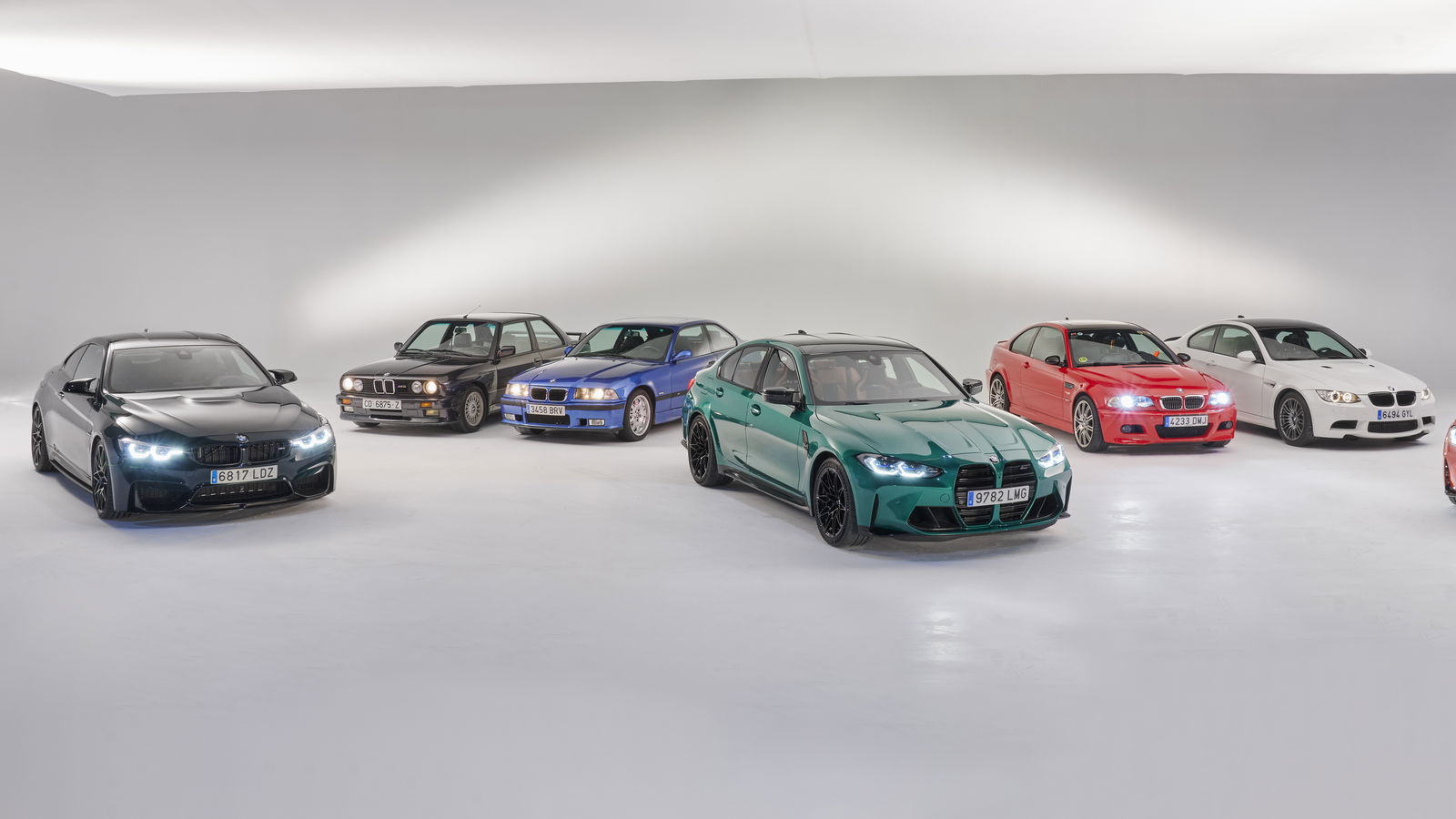
A BMW M3 is, essentially, a 3-series that’s been overhauled by BMW’s M Division with a very determined focus on performance. This has always involved the installation of an engine which cannot be found in any other 3-series, combined with various other performance improvements.
Typically, each M3 has featured lower, stiffer suspension compared to the 3-series models upon which they were based, with wider tracks necessitating the use of bespoke bodywork with blistered wheel arches.
The M3 now spans five generations produced over nearly 40 years. For a long time, it was the entry-level M Car, although now it has the M2 sitting under it in the range, plus many other M-branded models that aren’t considered ‘full’ M cars. Yes, the likes of you, M135.
BMW E30 M3 (1986-1991)
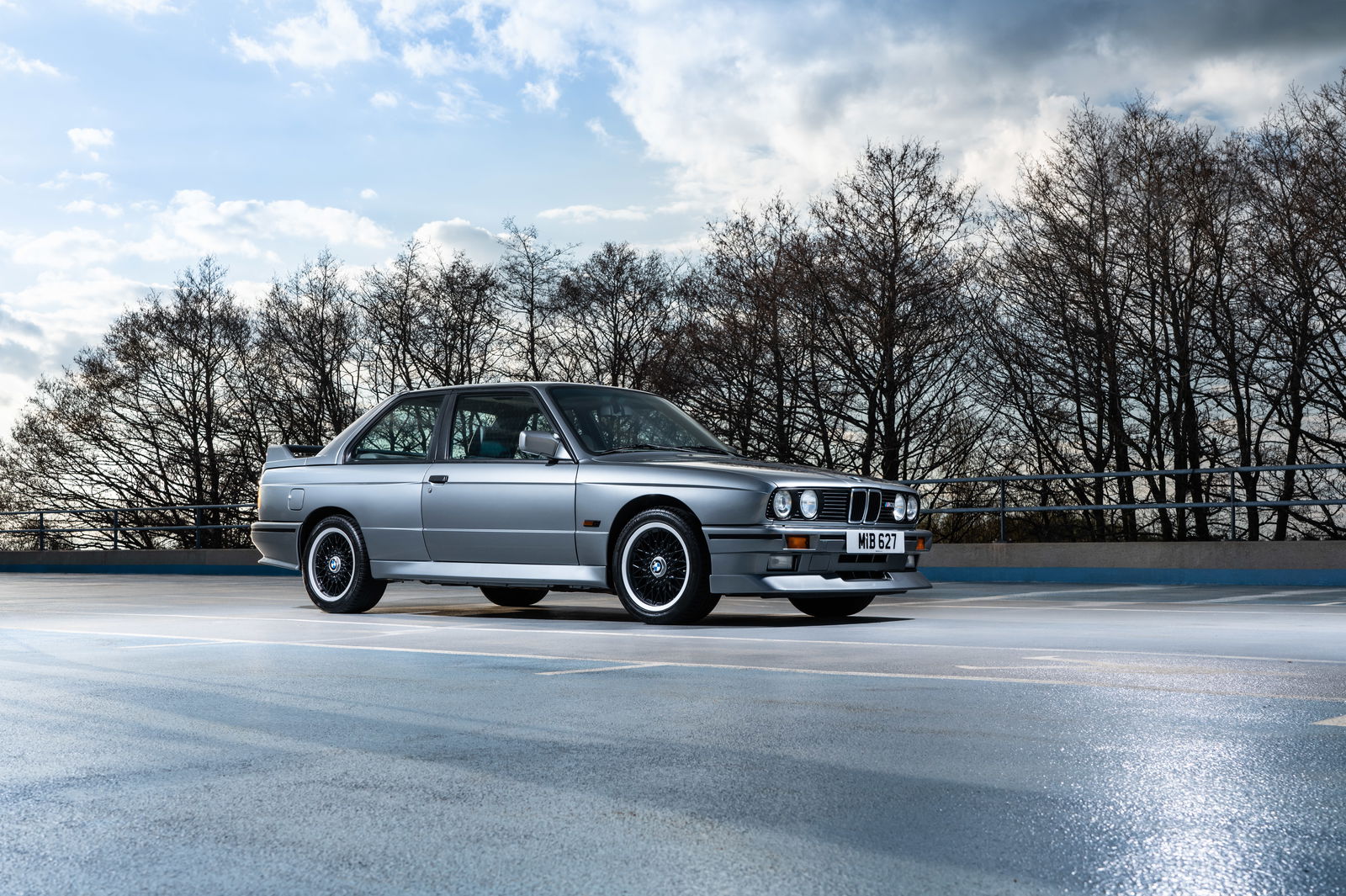
The first-ever M3 stands out from all subsequent M3s for two main reasons. Firstly, it was built purely as a Group A homologation special, enabling BMW to take on the Deutsche Tourenwagen Meisterschaft (that’s the German DTM touring car series to you and me). To comply with the regulations, the manufacturer needed to make at least 5,000 cars to sell to the general public.
Secondly, it’s still the only generation of M3 to be powered by an inline four-cylinder engine. It’s a special one, though. Using the aluminium block of the venerable M10 engine as a starting point, BMW M engineers added a unique 16-valve cylinder head to replace the standard eight-valve top end, while the displacement increased from 2.0 to 2.3 litres. BMW designated this new, 197bhp engine the ‘S14’.
The S14 wasn’t entirely exclusive to the M3, it should be noted – the Italian and Portuguese markets received the ‘320iS’, a sort of ‘semi M3’ using a 2.0-litre version of the S14 to get around tax laws that heavily penalised anything with an engine bigger than that. See also Italian-market oddities like the Ferrari 208.
To go with the new engine, the E30 M3 received wider suspension tracks front and rear, with the wheel arches given boxy flares to suit. Testing took place at a little place called the Nürburgring and at the Nardò Ring in Italy to ensure both the road-going and racing versions could cope with any reasonable punishment thrown at them.
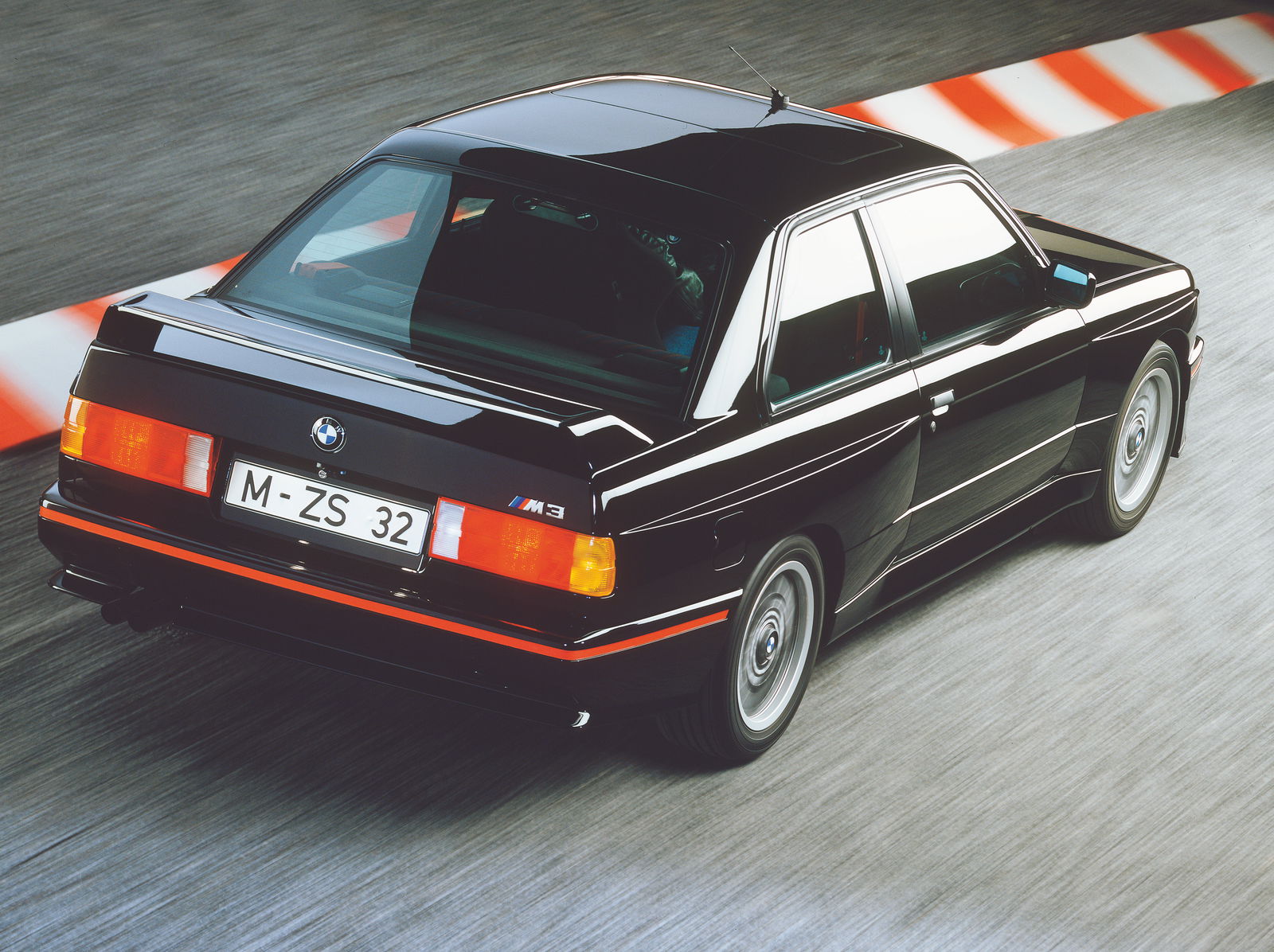
The motorsport world never stands still, so to keep the racing versions of the M3 competitive, evolutions of the BMW M3 were introduced. Called, logically enough, the M3 Evolution, the first such model was introduced in 1988 with power upped to 217bhp. Tweaks continued over the years, and by 1990 a lucky 600 customers could buy the M3 Sport Evolution. This had the engine enlarged to 2.5 litres and power boosted to 235bhp. It also featured adjustable front aprons for aero finessing.
Various other limited edition E30 M3s were unleashed during its life, usually to celebrate motorsport glory (which was considerable – the E30 M3 is generally held to be the most successful touring car in the world). These included the Macao Blue M3 Europameister (limited to 148 units) to celebrate the 1988 European Touring Car Championship title, and 505 units of the M3 Cecotto – named after Venezuelan racer Johnny Cecotto – which had its power boosted to 212bhp.
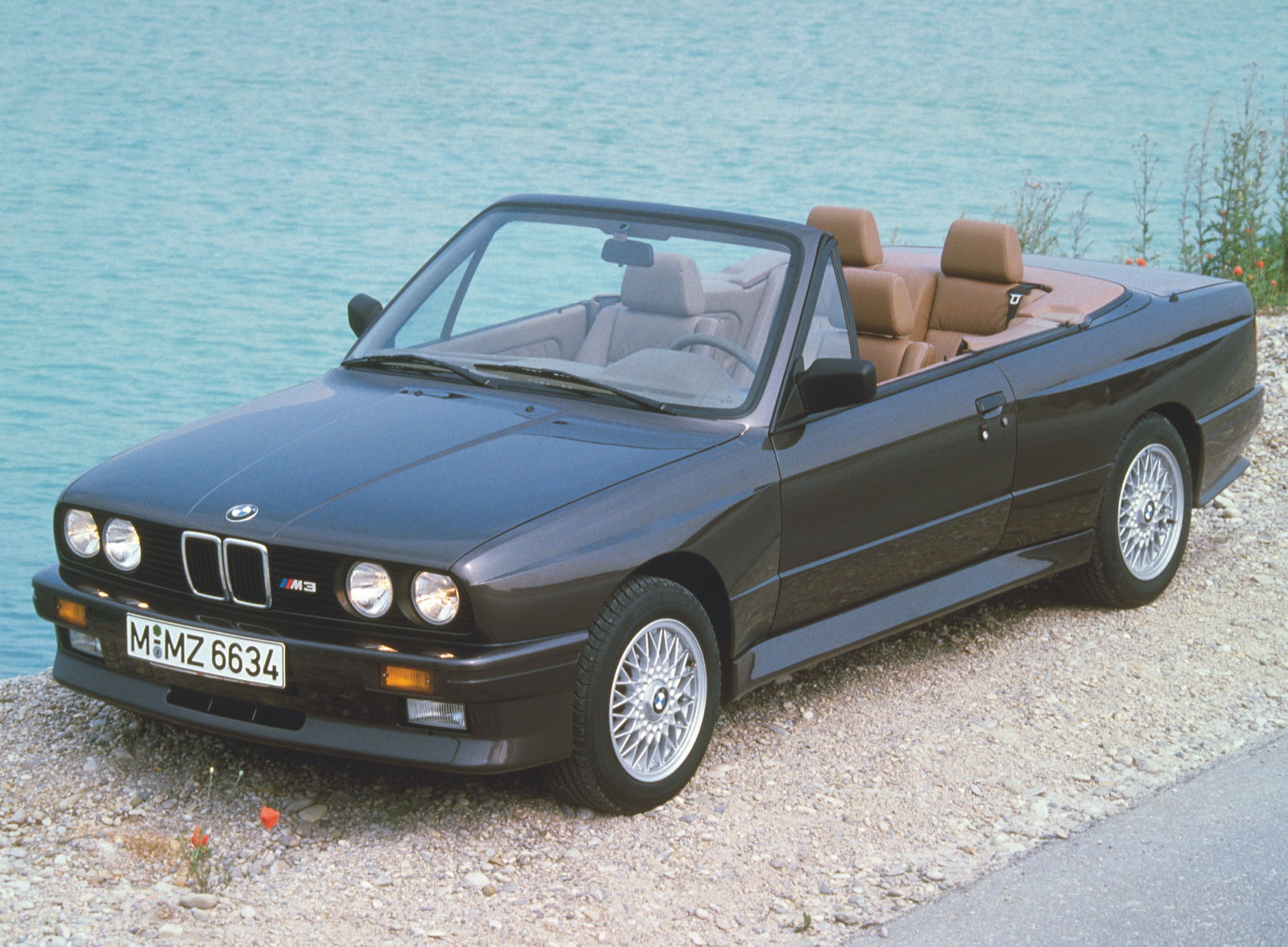
The E30 M3 was never officially sold in the UK and no right-hand drive models were ever made by BMW, although some have since been converted. Nevertheless, some 18,000 M3s were sold in two-door and convertible form.
BMW E36 M3 (1992-1999)
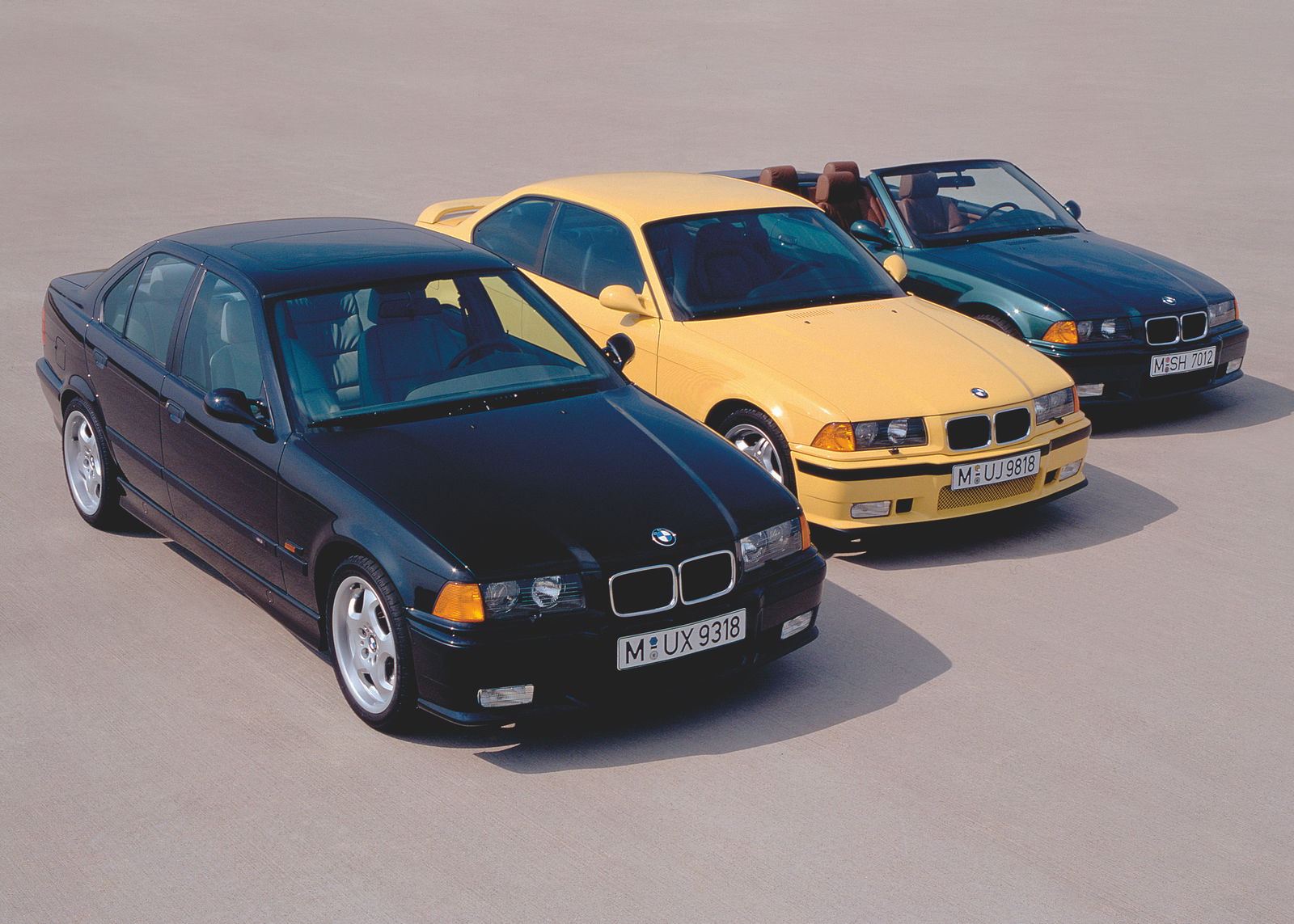
A new generation of BMW 3-series saw an all-new M3 in 1992. The E36 model switched to a new type of engine that’s now synonymous with the M3 – a 3.0-litre straight six, called the S50B30. Pushing out 282bhp and available in saloon form for the first time, it also debuted the VANOS system, a variable camshaft adjustment tech that’s been a mainstay in BMW engines since.
Compared to the somewhat hooliganistic E30 M3, the E36 was much more grown-up. It even came in saloon form for the first time, as well as the then-traditional coupe and convertible. That said, it still had plenty of raw motorsport pedigree. Visual tweaks over the standard 3-series were not as dramatic as with the E30, but aero mirrors, lowered stance and a sleek body kit all hinted at the performance potential.
Power upgrades came in 1995 with the B32 incarnation of the S50 engine. The capacity was increased to 3.2 litres and power had a hefty hike to 317bhp. This gave the E36 M3 a 0-62mph time of 5.5 seconds, which is still quick even three decades later. The new engine came with a new six-speed manual gearbox replacing the five-speed. A year later, a still-controversial (for some) innovation appeared – the SMG, a sequential automated manual that would herald the state of things to come.
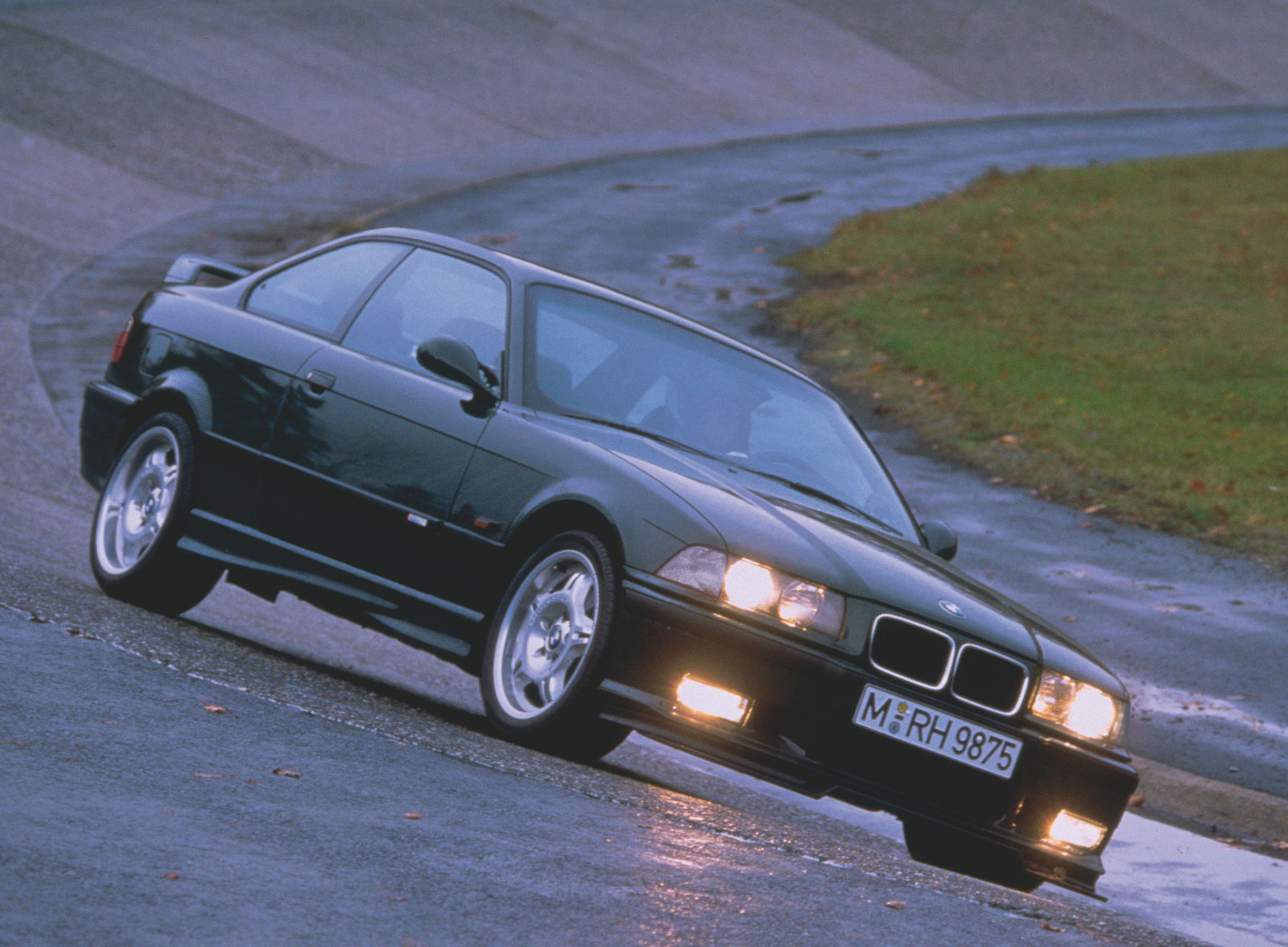
Naturally BMW tinkered with the M3 over the years, releasing several versions of it. In 1994 the limited-edition BMW M3 GT was released, restricted to just 350 units all clad in British Racing Green paint. It also had more power than standard at 291bhp, as well as aluminium doors and an upgraded spoiler for extra performance. In 1995, an even more limited run of 50 was made in right-hand drive for the UK market, and called the M3 GT Individual.
Other UK special editions include the Imola Individual, of which 50 were made in 1998 to commemorate the end of the M3 production run. All were coupes clad in Imola Red paint.
BMW also mulled the idea of an M3 version of the E36 Compact, and even built a stripped-down concept version in 1996 with bucket seats and a roll cage, but it was never put into production. Still, good idea for a project car…
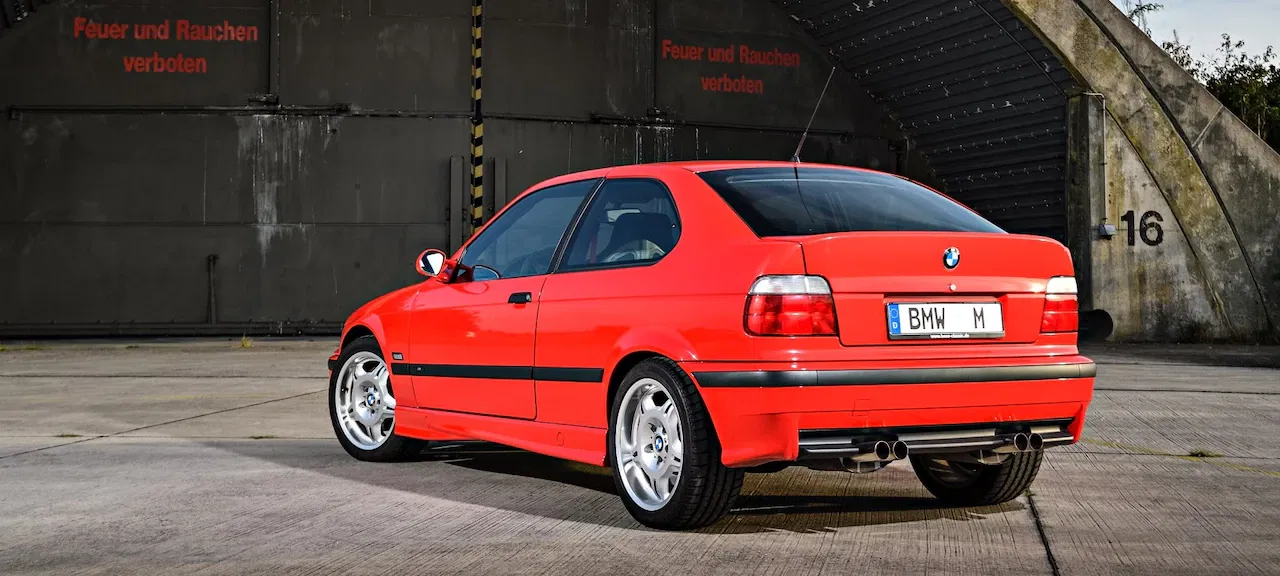
North America never got the European version of the E36 M3. Instead, BMW made a different car that was initially sold as the 325is, but was then badged as M3. It had less power, with 240bhp from the 3.0-litre version of the S50, which had fewer uprated components as the standard M3. It was sold in 1994 and 1995, and in 1996 the US got a new engine – the S52 – to go with the M3’s facelift. It made the same power.
BMW E46 M3 (2000-2006)
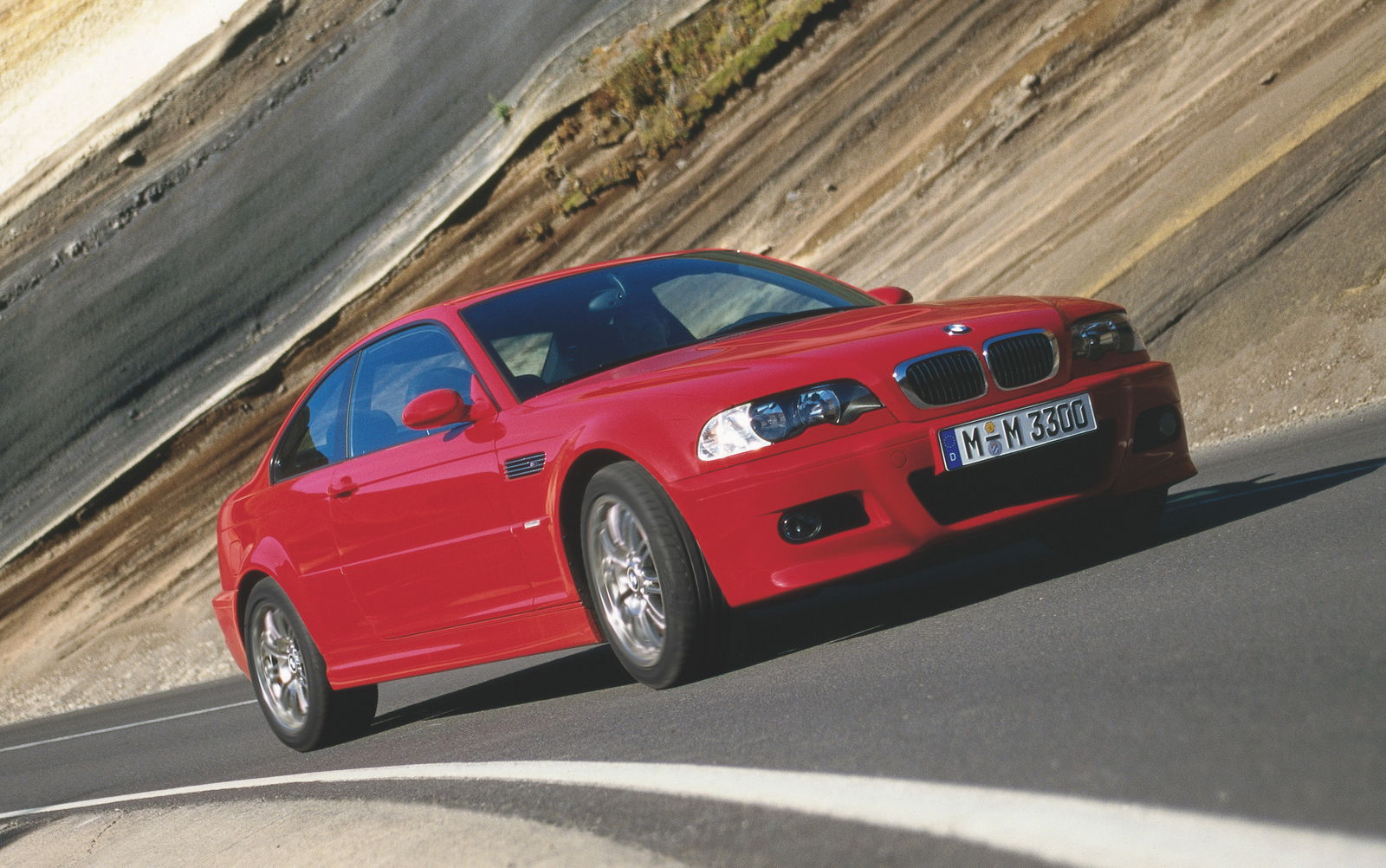
Debate will forever rage about what the best-looking BMW ever is, but there will be plenty of votes for the E46 M3. The third-generation M3 was introduced in 2000 with a focus on weight reduction and a singing, high-revving straight-six engine. It was followed by the convertible version in 2001, but there was never a saloon. A Touring concept was built too, but never made production.
The E46 M3 introduced several features that have continued since – the chrome-plated ‘gills’ were originally intended as cooling ducts during development. As it turned out, they weren’t needed, but they looked cool so the designers kept them in. The side mirrors were refined from the E36 to be more aerodynamic, and the powerdome on the bonnet was installed to create space for the intake system. And, yes, because it looks awesome. A small but significant spoiler was added to the boot lip, pushing down the back end to provide extra grip in fast corners.
Power came from a 3.2-litre S53 B32 straight six with 338bhp. The VANOS system was upgraded giving it exceptional smoothness with power available throughout the rev range. It was a cracker, as eight Engine of the Year awards attest. Buyers could choose between a six-speed manual box and a six-speed SMG.
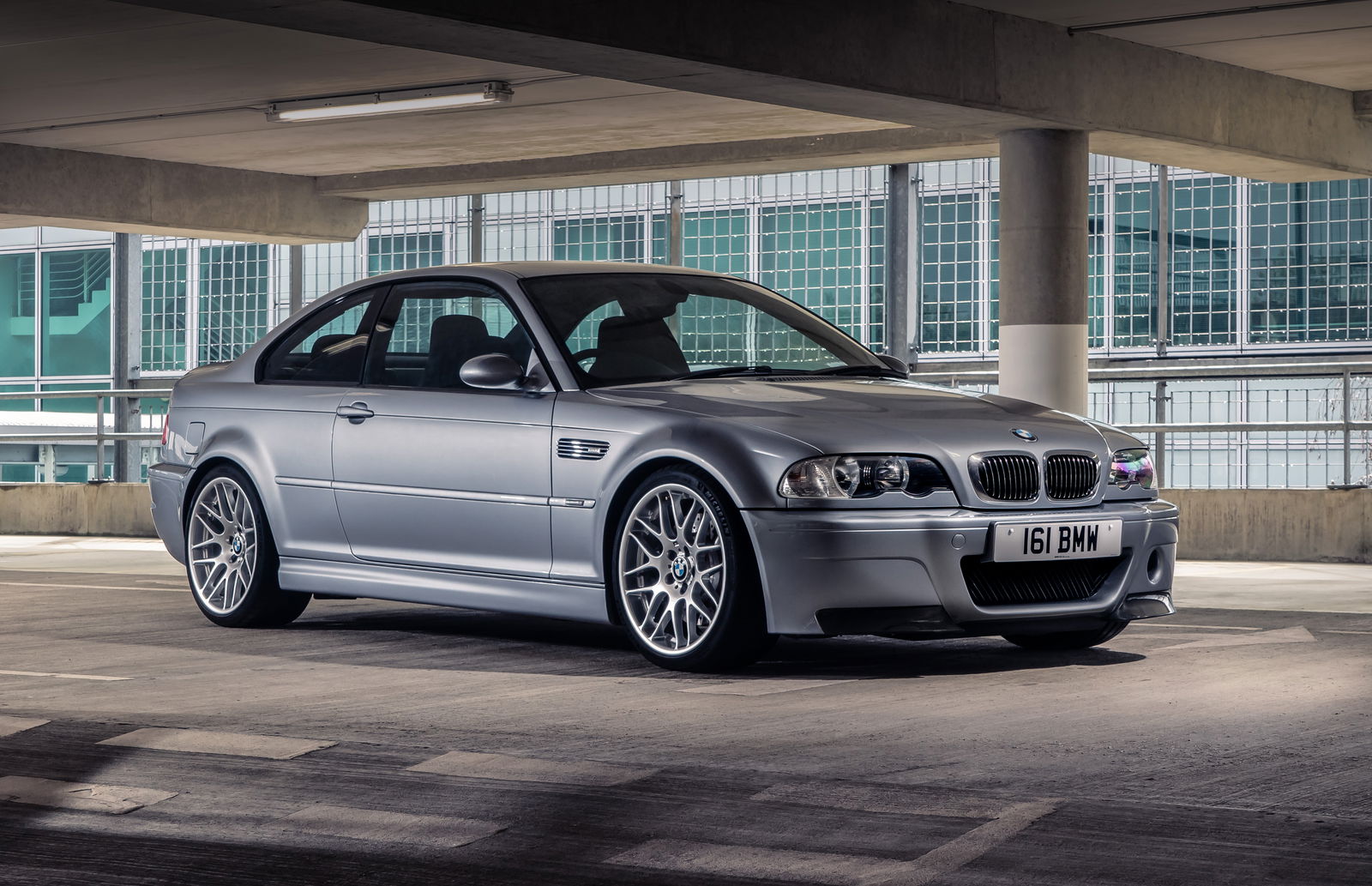
Some 85,000 E46 M3s were sold during its run, which makes it the most successful M car to date. It was given a minor facelift in 2003, and in the same year a variant was introduced that some consider one of the best cars that BMW has ever made: the M3 CSL.
Standing for Coupe, Sport and Lightweight, the M3 CSL was lighter and more powerful than the standard M3, and took its inspiration from the lightweight coupe race cars of the 1970s. Power was up to 355bhp at a singing 7,900rpm, with thinner exhaust walls and a carbon fibre airbox adding a distinctive edge to its sound. The SMG was redesigned especially, and with weight reduced by 110kg (composites abound and even a radio was an option) the performance was stellar, with a 4.9-second sprint to 62mph.
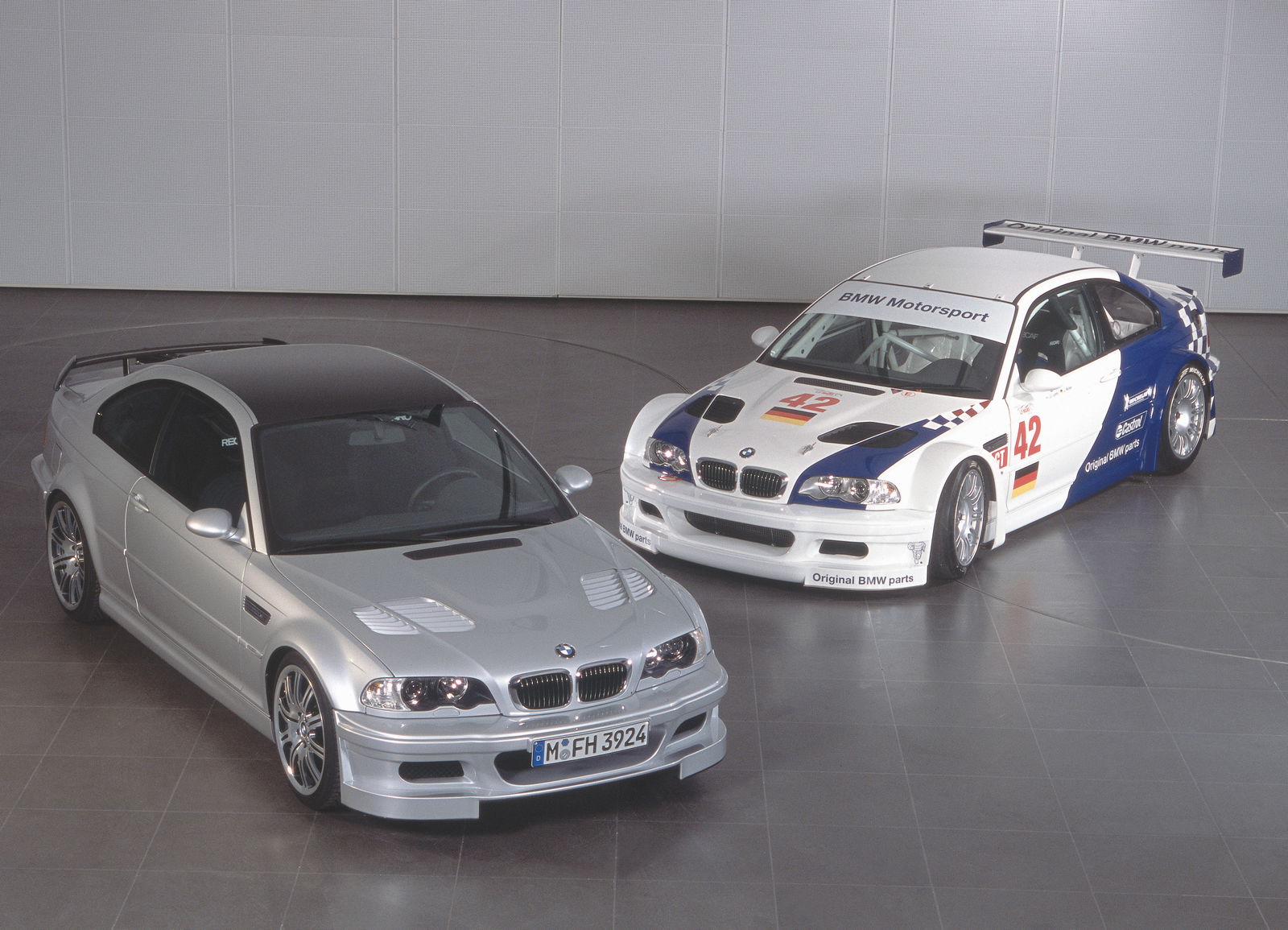
Another special E46 M3 had appeared in 2001. Ten M3 GTR Strassenversions were produced to satisfy homologation requirements for the American Le Mans Series’ GT Class. These road cars ditched the straight six and replaced it with a 4.0-litre V8 pumping out just shy of 350bhp. Just about everything was made from carbon fibre-reinforced plastic and it was equipped with a six-speed manual gearbox. It was pricey at the time – 250,000 Euros pricey – and we’re not sure if any of them were actually sold. Or what happened to them. If you know, get in touch…
BMW E90/E92/E93 M3 (2007-2013)
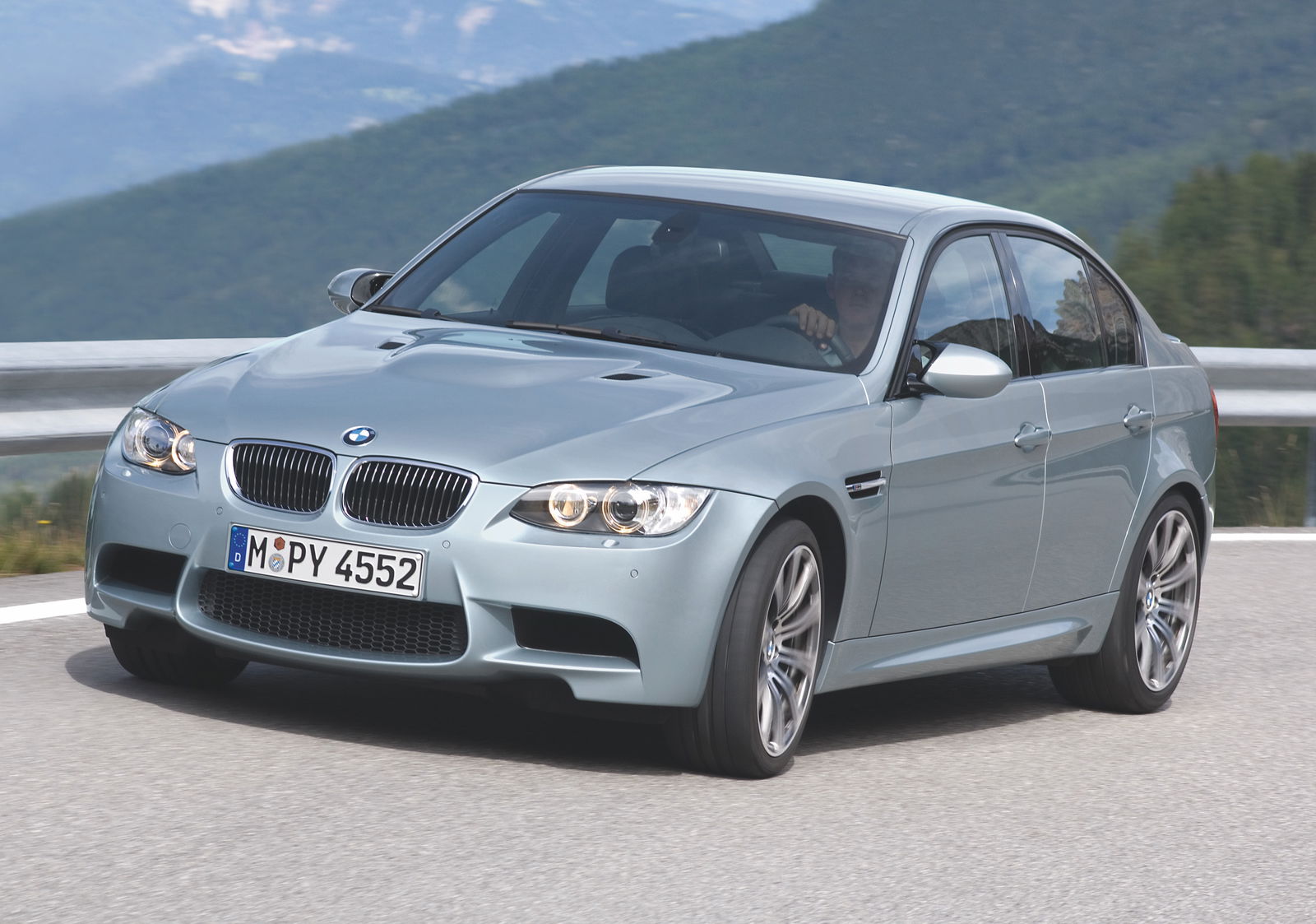
The fourth-generation M3 appeared first in 2007, when the E92 coupe model was revealed. The following year, the E93 Convertible arrived and then the Saloon model returned in the shape of the E90. It was facelifted in 2011.
The big change for the E9X M3 was the ditching of the straight-six engine and the arrival of a V8. The 4.0-litre S65B40 unit bumped power up by a big chunk to 414bhp that revved up to 8,300rpm but developed 250lb ft from just 2000rpm, with a wide torque band that pumped out up to a max of 295lb ft.
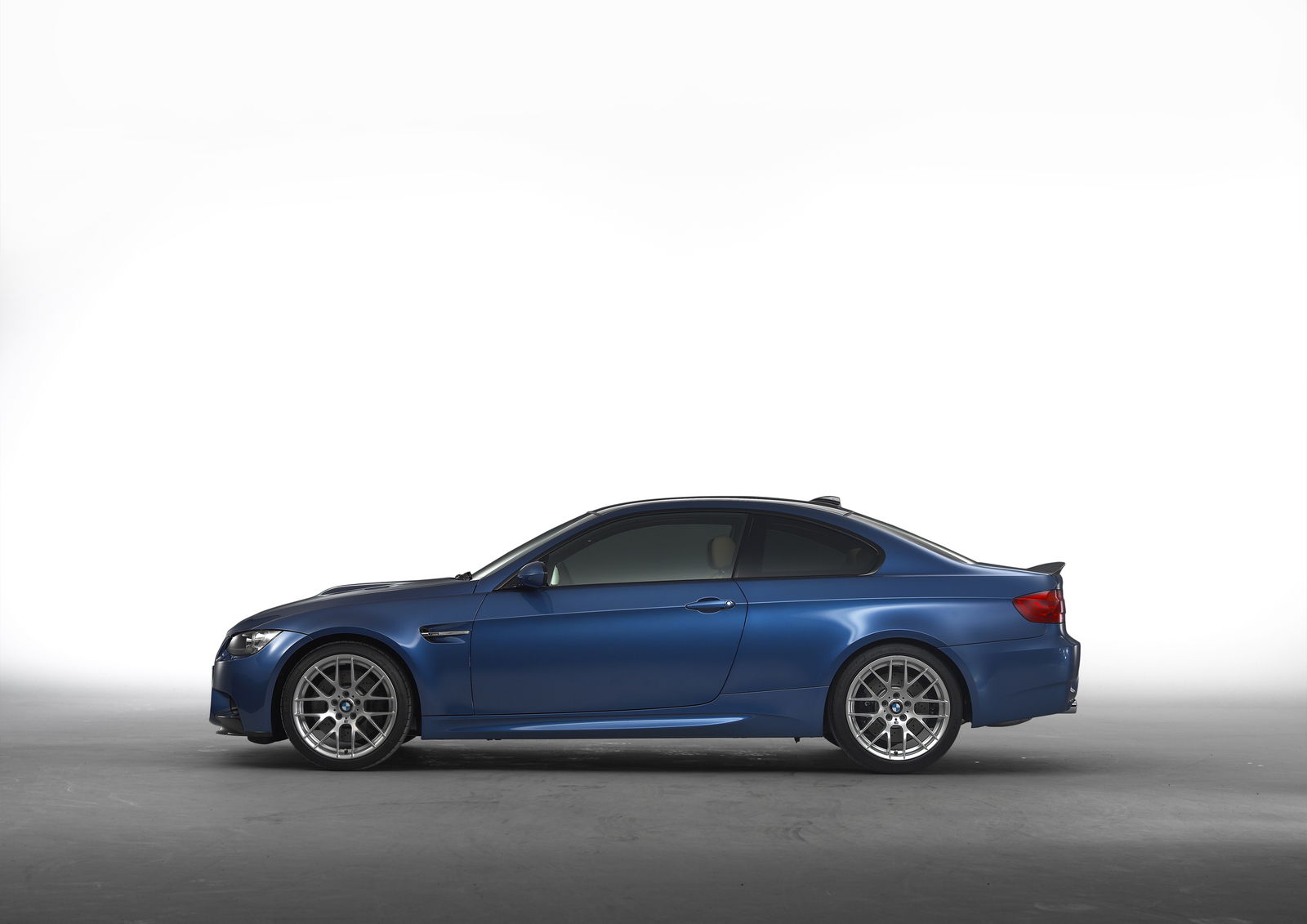
As cars in general got necessarily heavier, the M3 aimed to counter that. The engine, inspired by the BMW V8 used in F1 at the time, weighed just 202kg, which was 15kg lighter than its six-cylinder predecessor. The M3 also came with a carbon fibre roof as standard – something that was previously only a feature of the M3 CSL.
An adaptive chassis with electronic camper control, called the M Drive System, was standard, allowing drivers to choose between three different driving characteristic modes. Other tech included a new, faster dual-clutch automatic gearbox and launch control, which resulted in the fastest standard M3 yet.
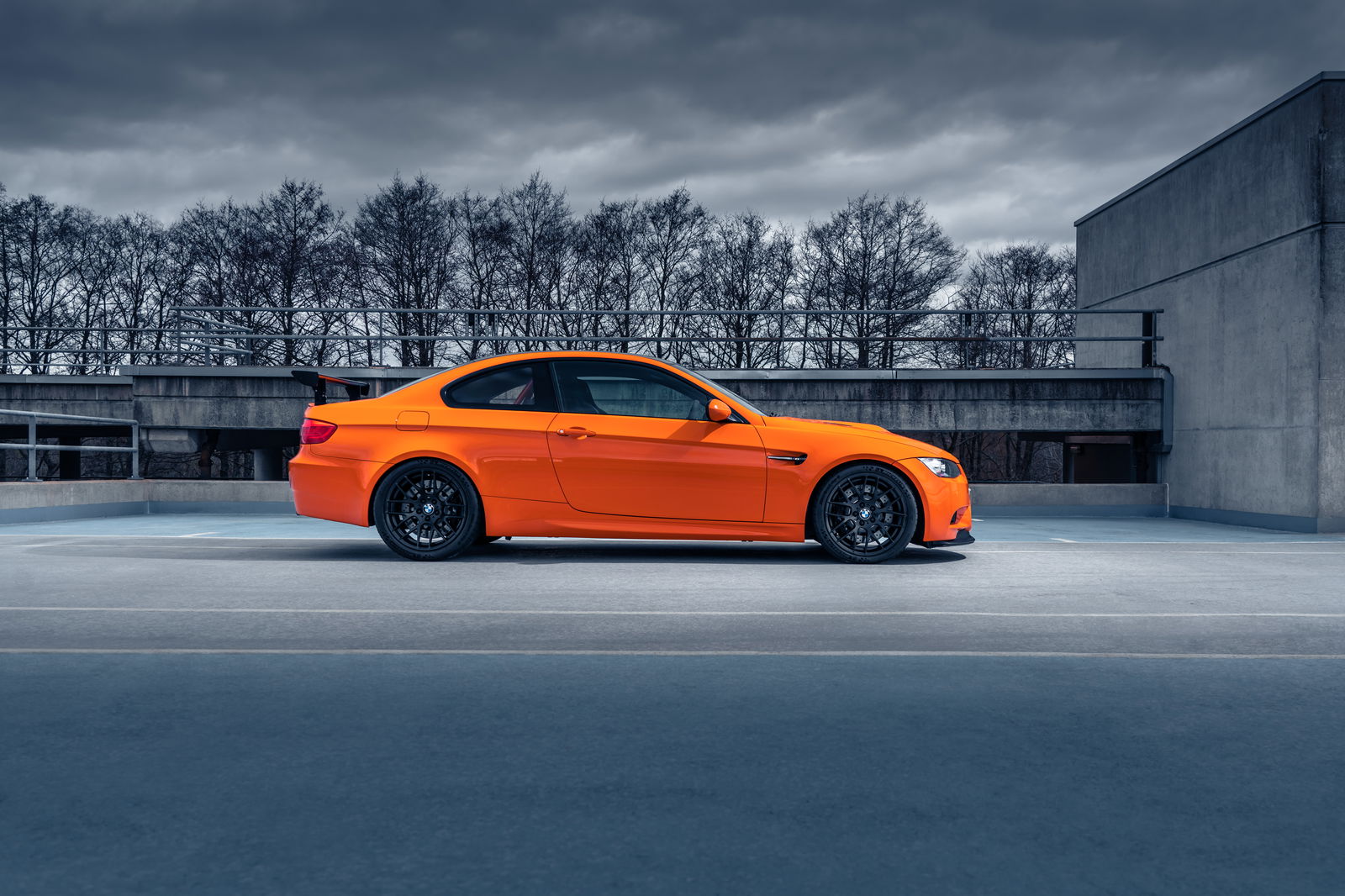
In 2010, a more hardcore version of the E92 was revealed. The M3 GTS was clad in Fire Orange paint and a large adjustable wing taken from a World Touring Car racer, and upped power to 444bhp from a 4.4-litre version of the S65 engine with a longer stroke. As well as more power and torque (up to 324lb ft), weight was stripped for extra performance – the rear seats were replaced by a roll cage, sound insulation was removed, Recaro sports seats were installed in the front and perspex replaced glass in the side and rear windows. The M3 GTS is 70kg lighter than a regular E92 M3. Just 138 were made, and they’re highly sought after today, with prices to match the demand.
2011 saw another special edition – the very limited M3 CRT saloon. Only 67 were made, all for the LHD European market, sprayed in Silver Frost paint, and using the 4.4-litre version of the S65 from the GTS. CRT stands for Carbon Racing Technology, reflected in its carbon fibre-reinforced plastic body panels, which helped to contribute once again to a 70kg weight saving over the standard E90. Adjustable suspension and a titanium exhaust added to the CRT’s appeal.
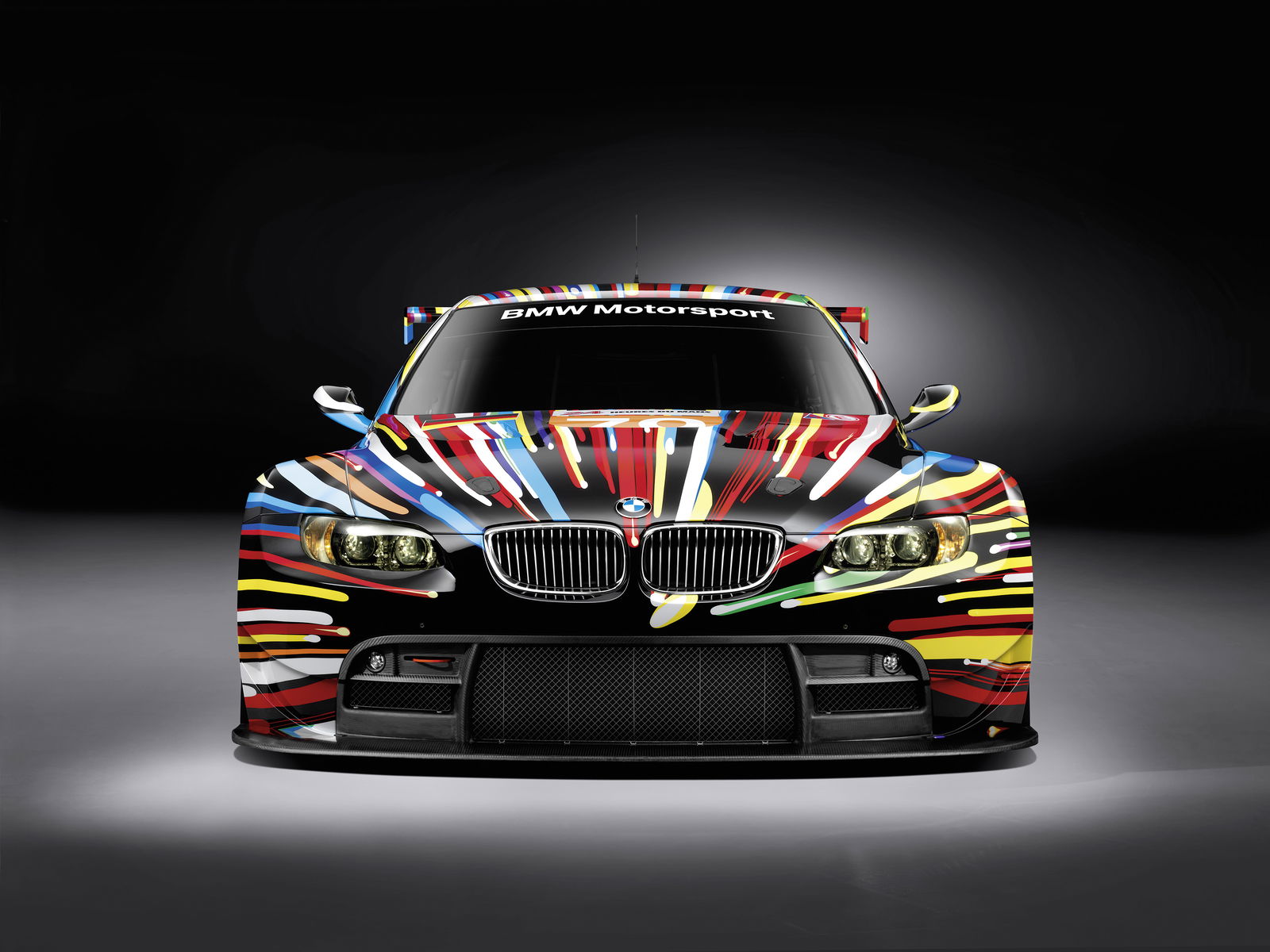
This generation of M3 also saw a new BMW Art Car added to the collection. BMW has collaborated with top artists since the mid-1970s to decorate a car, and in 2010 Jeff Koons worked his magic on the 17th Art Car. The completed M3 GT2 race car competed at that year’s 24 Hours of Le Mans.
BMW F80 M3 (2014-2018)
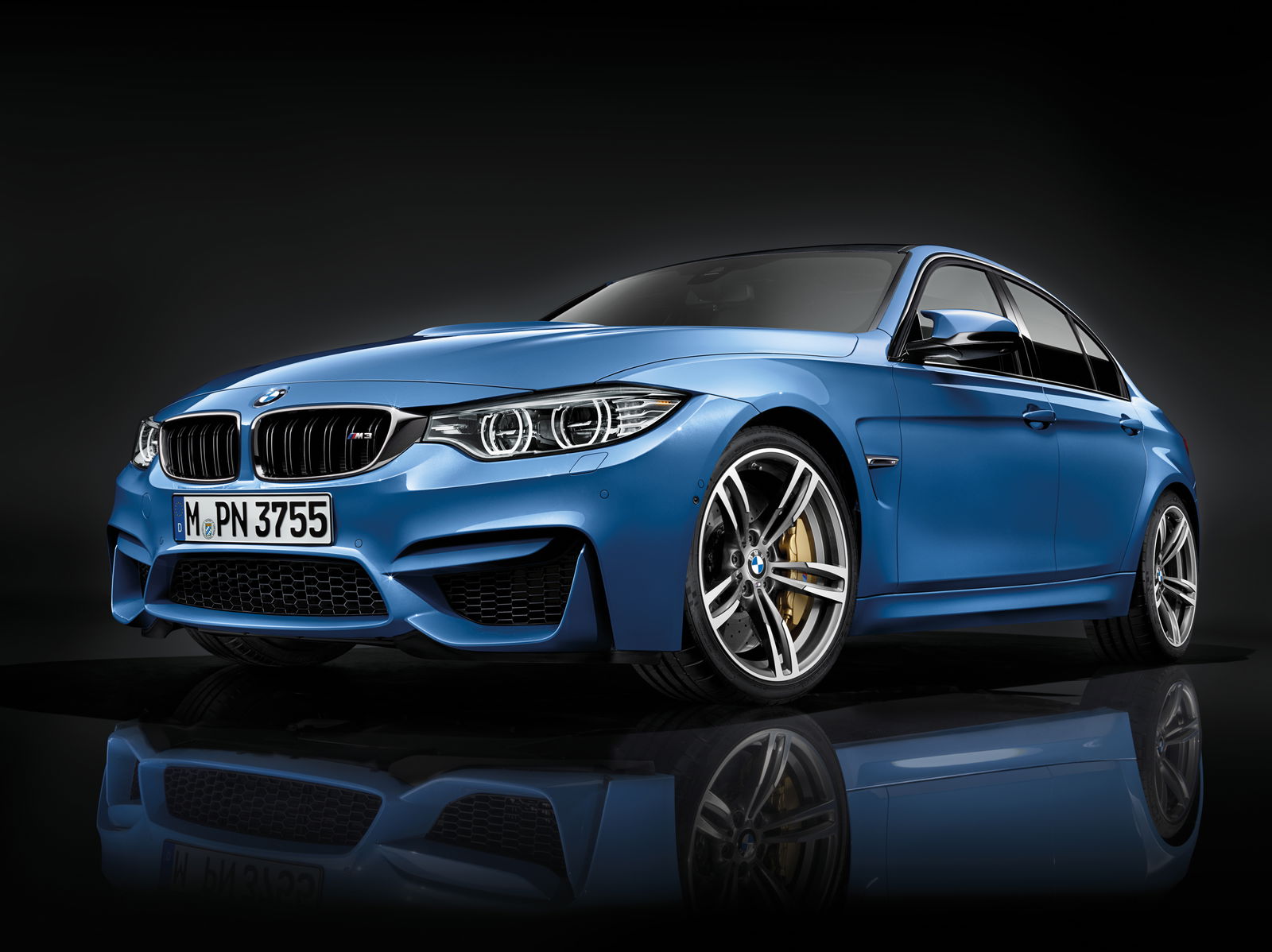
The fifth-generation of M3 saw the badge redefined. From the F80 generation onwards, the M3 would be a strict saloon model, with the coupe and convertible versions rebadged as the M4.
The dalliance with the V8 in the E9X M3 was put in the past, with the F80 embracing a straight six once again. This time around it was the 3.0-litre S55 B30, now featuring a turbocharged setup that boosted power despite the drop in cylinders. The output rose to 425bhp and 406lb ft, with peak torque arriving from just 1850rpm. The 0-62mph sprint dipped to 4.1 seconds, with gear shifts taken care of through a seven-speed dual-clutch transmission (there was a manual, too).
BMW introduced more personalisation options for this generation of M3, with a much wider range of M Performance Parts, which means more variation in the used market.
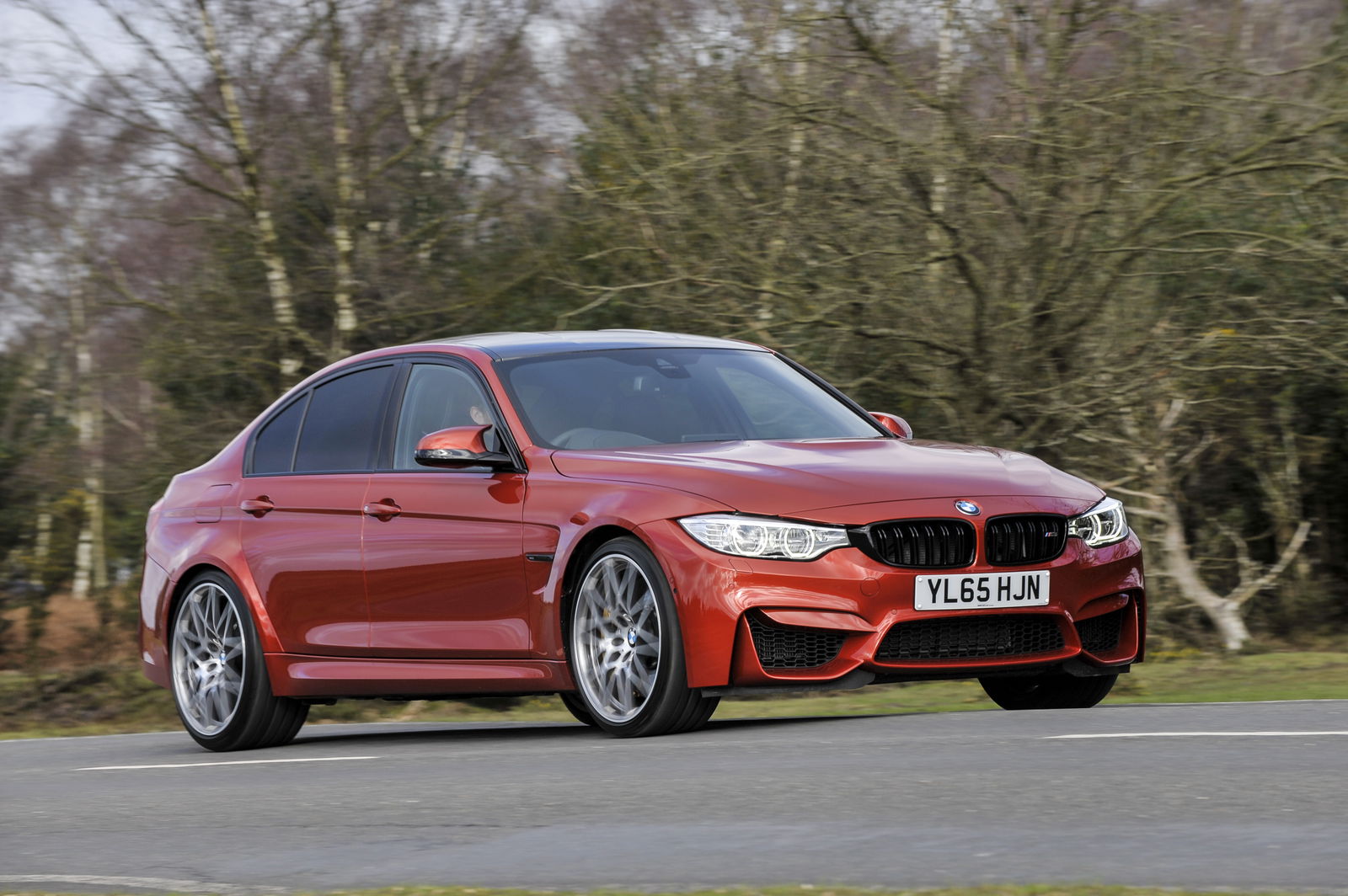
In 2016, a Competition version of the M3 was introduced for the first time. This boosted the performance of both the engine and the suspension, with power hiked to 444bhp and Adaptive M Suspension included on all models. A remapped exhaust system gave a fruitier sound, and various cosmetic extras were added, too. The Competition model was so popular that it eventually replaced the standard M3 entirely.
The M3’s 30th anniversary arrived in 2016, and to celebrate BMW launched 500 special edition cars, called the 30 Jahre M3. They all wore Macao Blue metallic paint, inspired by the E30 M3, and all were fitted with the Competition package.
The following year, the F80 had a facelift, with revised lights, new colours and alloy designs, as well as some mechanical tweaks to improve the car’s ride characteristics and handling. And that same year, the M3 CS was introduced, following the M4 CS as a special edition. Power was boosted again, to 454bhp, with upgraded track suspension, lightweight seats and carbon bonnet and roof.
New emission regulations meant production of the M3 ended towards the end of 2018.
BMW G80/G81 M3 (2020-)
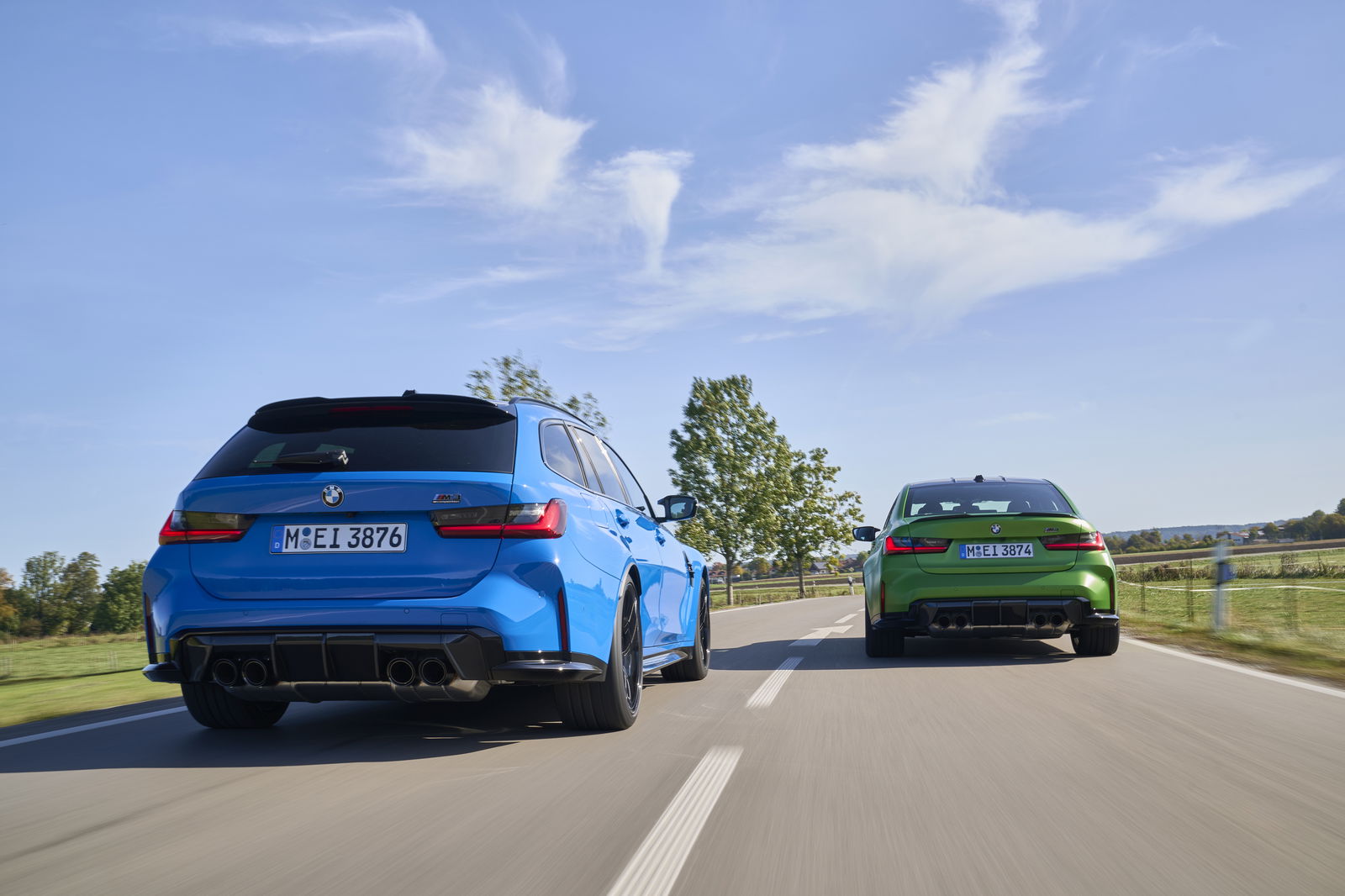
And so to the present day. The G80 generation M3 was unveiled at the end of 2020 and for the first time offered the option of xDrive four-wheel drive, as well as the traditional rear-wheel drive.
The standard M3 houses a 3.0-litre S58 straight six with 473bhp, linked to a six-speed manual gearbox, but it isn’t sold in the UK. Instead, we get the upgraded M3 Competition, sold from 2021 with power boosted to 503bhp and mated to an eight-speed Steptronic automatic, dropping the 0-62mph time to just 3.9. It’s easily the fastest M3 yet, and has a price tag to match. In 2024, the rear-drive M3 was dropped in the UK, too, meaning we can only get an xDrive-equipped Competition.
For the first time, BMW introduced a Touring estate version of the M3. Such an idea had been mooted way back in the E46 generation when a concept M3 Touring had been built, but it never made it to production. This time, however, the arrival of the G81 M3 Touring was trumpeted from the outset, with the characteristics of the Saloon embellished with what BMW called “a highly variable luggage compartment”. It eventually went on sale in 2022, again only in Competition guise and with xDrive.
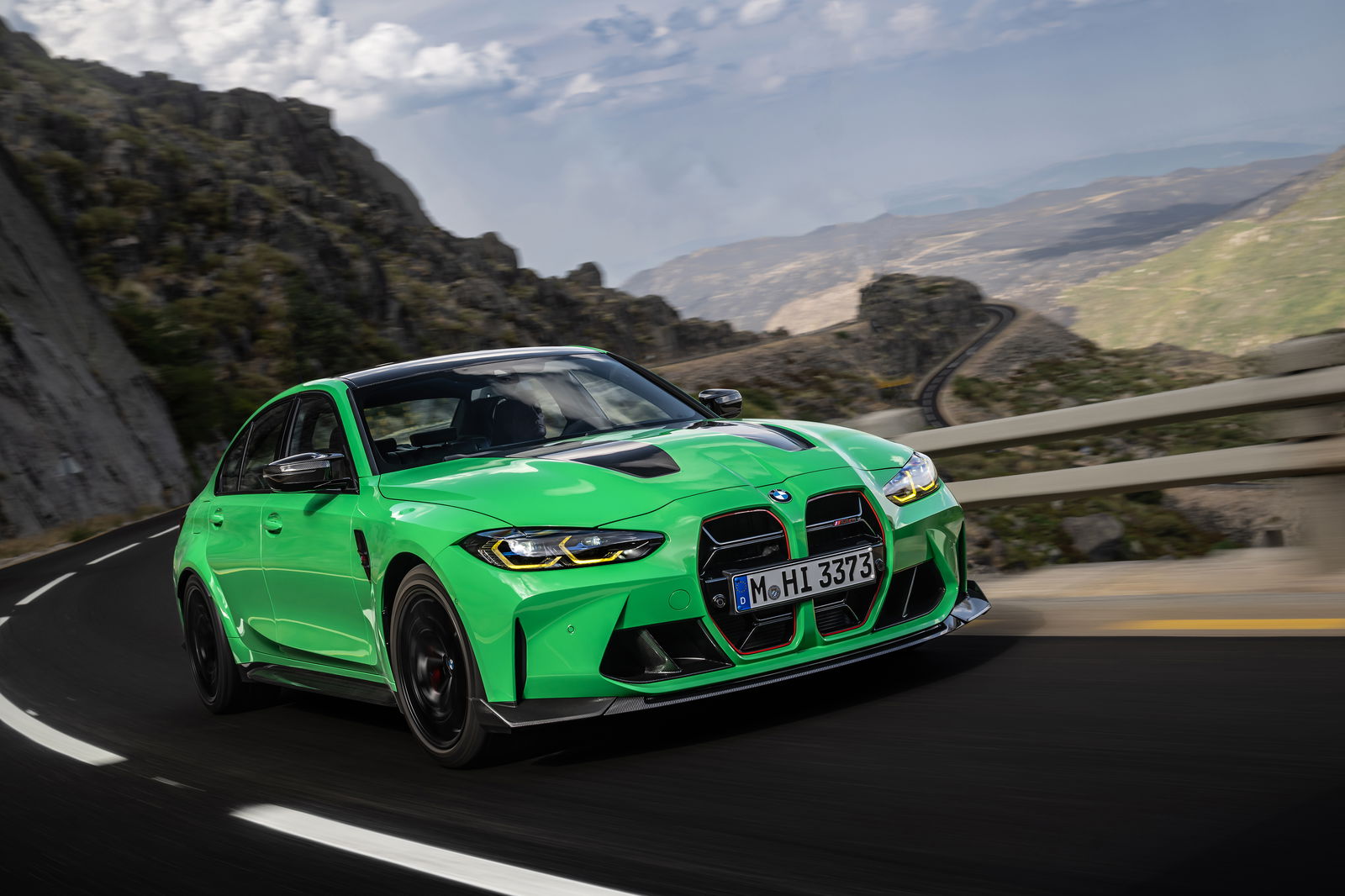
As if the standard (for the UK) M3 Competition wasn’t hardcore enough, BMW introduced the M3 CS in 2023, with an extra 40 horses under the bonnet and 20kg chucked in the bin, which lowered the 0-62mph time even further to 3.4 seconds. The suspension is track-focused but adaptive, which in theory makes it comfortable enough for road use.
The Future
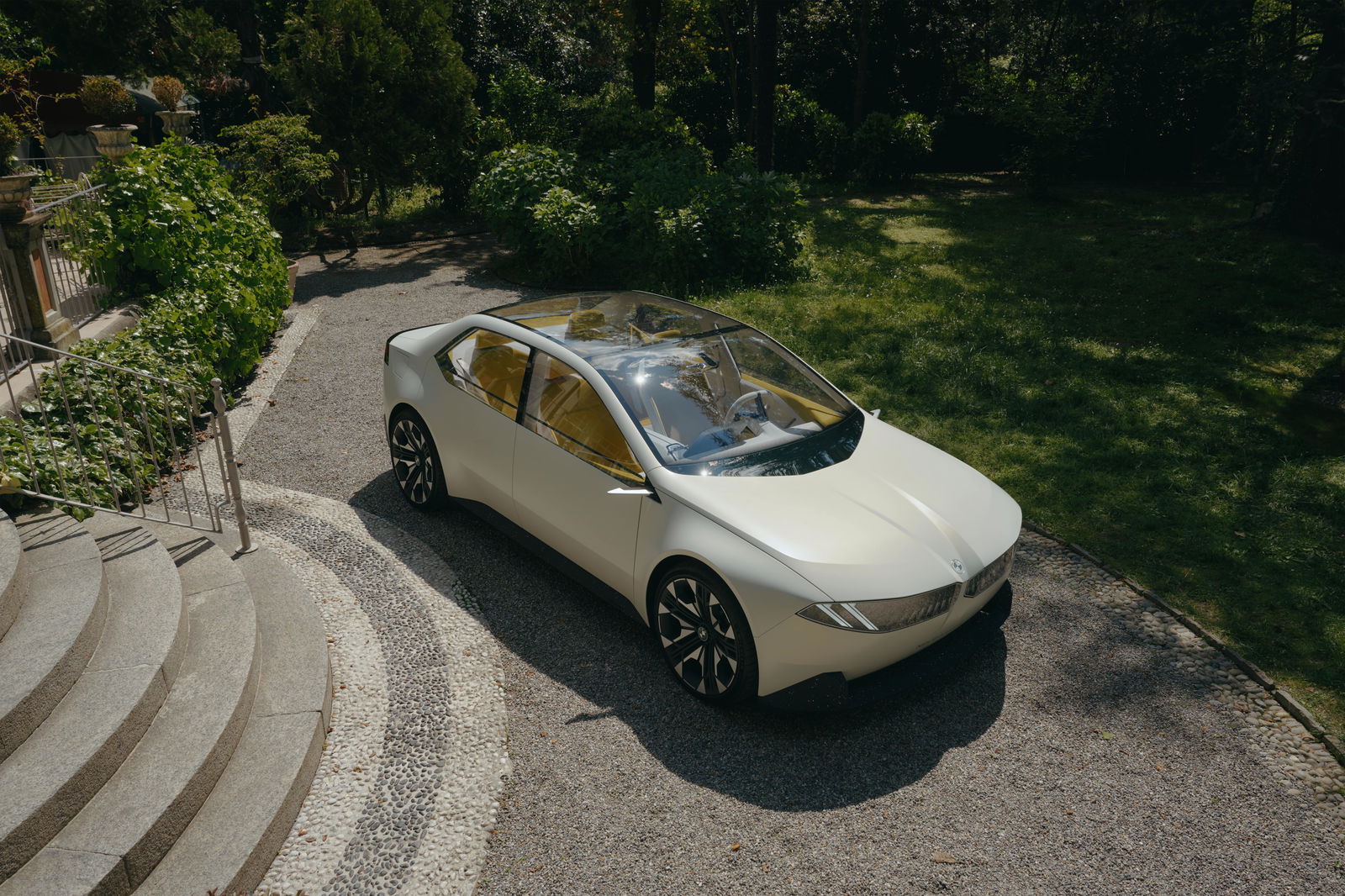
What does the future hold for the BMW M3? Well, it almost definitely doesn’t hold a pure petrol car again. BMW has trademarked the iM3 badge and with BMW’s new Neue Klasse platform scheduled for 2027, we’ll see a pure electric version of the performance icon hit the streets soon afterwards. But smart money says we’ll see a new regular M3 too, with a revised 3.0-litre straight six probably attached to a hybrid system. Will it come to the UK? That has yet to be decided. But here’s hoping the legacy continues.
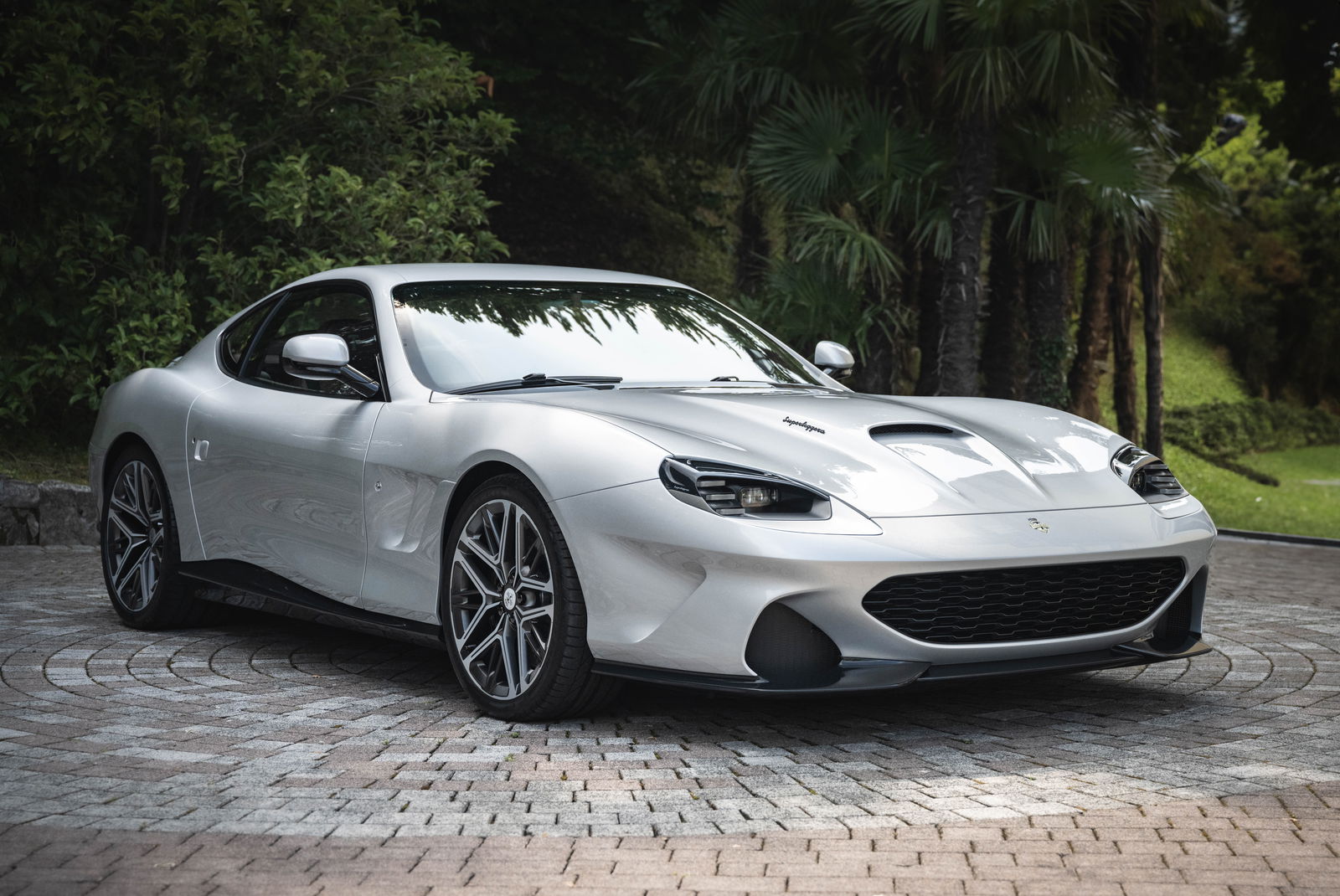
.jpg?width=1600)

Comments